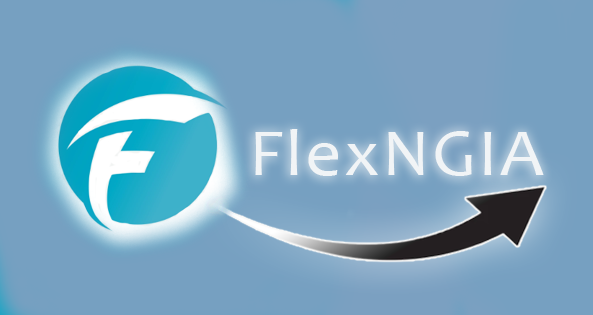
1st IFIP/IEEE International workshop on
Fully-Flexible Internet Architectures and Protocols
for the Next-Generation Tactile Internet (FlexNGIA 2021)
Friday, May 21, 2021
Workshop Program (time in CEST)
14:15- 14:30 Opening - Marie-José Montpetit (Concordia University, Canada ), Noura Limam (University of Waterloo, Canada)
14:30-15:00 Invited Talk, "FlexNGIA – Drawing the Architecture of the Next-Generation Tactile Internet" by Mohamed Faten Zhani (ETS Montreal, Canada)
15:00-16:00 Technical Session 1 - Session Chair, Noura Limam (University of Waterloo, Canada)
"SRFog_ A flexible architecture for Virtual Reality content delivery through Fog Computing and Segment Routing”, José Santos, Jeroen van der Hooft, Maria Torres Vega, Tim Wauters, Bruno Volckaert, Filip De Turck
"Multimedia Microservice Placement in Hierarchical Multi-tier Cloud-to-Fog Networks", Fillipe Santos, Roger Immich, Edmundo Madeira
16:00-16:15 Break
16:15-16:45 Technical Session 2 (Marie-José Montpetit, Concordia University, Canada)
"Infinity_ A Scalable Infrastructure for In-Network Applications", Marcelo Abranches, karl olson, Eric Keller
"Cyber Physiotherapy Rehabilitation to Training", Ishan Ranasinghe, Ram Dantu, Mark V. Albert, Sam Watts, Ruben Ocana
16:45-17:45 Keynote, "Networking and Computing, a Great Confluence?" by David Oran (MIT, USA)
17:45-18:00 Closing Session - Marie-José Montpetit (Concordia University, Canada ), Noura Limam (University of Waterloo, Canada)
FlexNGIA Workshop Keynote Information
Keynote Speaker Biography : David Oran was until 2016 a Fellow at Cisco Systems. He is now independent and pursuing his research interests in a number of areas, including in-network computing and Information Centric Networking. His recent work has been in congestion control for ICN and using ICN as a substrate for modern distributed computing languages. His long term technical interests lie in the areas of Quality of Service, Internet multimedia, routing, and security. He was part of the original team that started Cisco's Voice-over-IP business in 1996 and helped grow it into a multi-billion dollar revenue stream. Prior to joining Cisco, Mr. Oran worked in the network architecture group at Digital Equipment, where he designed routing algorithms and a distributed directory system. Mr. Oran has led a number of industry standards efforts. He was a member of the Internet Architecture Board, co-chair of the Speech Services working group, and served a term as area director for Routing in the IETF. He currently serves as co-Chair of the Information Centric Networking Research Group of the IRTF. He was on the board of the SIP Forum from its inception through 2008. He also serves on the technical advisory boards of a number of venture-backed firms in the networking and telecommunication sectors. Mr. Oran has a B.A. in English from Haverford College.
Keynote Abstract: Two contemporaneous trends are merging the two separate yet interdependent technologies of computing and networking. Hardware and software historically associated with computing complexes (General-purpose CPUs running virtual machines, conventional operating systems, and languages) are being used more and more to host networking functions at all but the highest speed tiers. Networking devices such as switches, routers and NICs are becoming programmable in ways that allow general purpose computing to be done “in the network”. This talk examines these trends, presents some of the salient research illuminating the advantages and limitations, and speculates on where this merging of technologies might take us.
Organizing Committee
General Co-Chairs
Marie-Jose Montpetit, Concordia University, Canada
Latif Ladid, IPv6 Forum/University of Luxembourg, Luxembourg
Rui L. Aguiar, University of Aveiro, Portugal
TPC Co-Chairs
Nadjib AitSaadi, Paris-Saclay University, France
Noura Limam, University of Waterloo, Canada
Lisandro Zambenedetti Granville, UFRGS, Brazil
Technical Program Committee
Please check the FlexNGIA Team Page
Call For Papers
The rise of edge, cloud and in-network computing and the proliferation of Artificial Intelligence (AI) solutions in networking are promoting the development of innovative applications like virtual/augmented reality, telepresence, autonomous systems, remotely controlled robotics and tactile applications, promising to revolutionize health-care, transportation, industry, agriculture, society and culture. To deploy such applications and to comply with their requirements, there is a need for new Internet paradigms including a Tactile Internet that combines ultra low latency with extremely high availability, reliability and security. This has been the focus of both ITU and IETF/IRTF related initiatives for the past few years.
Today’s Internet falls short when it comes to providing such requirements due to Several design and implementation limitations. To overcome these it is essential to rethink the current Internet and devise new architectures and protocols by efficiently harnessing recent technological advances in terms of virtualization, Network softwarization, NFV/SDN, and Data plane programmability, even when they break the tenets of the current Internet. This vision is embodied in the FlexNGIA Architecture (https://www.flexngia.net)that has the potential to enable novel network services and management schemes adapted to the requirements of future Internet applications.
Topics of Interest
The topics addressed in this workshop include, but are not limited to:
Analysis of the characteristics and requirements of future network applications.
Gap analysis highlighting the limitations of the traditional Internet architecture and protocols and their inability to cater to future applications’ requirements.
Design and evaluation of new architectural paradigms and communication protocols as well as network management schemes based on AI/ML and distributed decision making .
Use-cases and specific applications and potential mechanisms, protocols and schemes to ensure the performance and reliability required by future applications including the move to Industry 5.0 and 6G networks.
Solutions to further develop the FlexNGIA towards a full-fledged architecture by addressing key research challenges including service function chaining, functional decomposition, alternative Network/Transport protocols, resource management, signaling, design of high-performance virtual network functions and services, high-precision monitoring, measurements and in-network telemetry, pricing and economics, Security and privacy (please check FlexNGIA Research Challenges)
Paper Submission
Authors are invited to submit original contributions. Submitted manuscripts should use IEEE 2-column conference style and are limited to 6 pages (including references).
Please submit your paper through the JEMS submission system via link : https://jems3.sbc.org.br/flexNGIA2021
Important Dates
Paper submission deadline: January 29, 2021 (extended)
Acceptance notification: February 18, 2021
Camera-ready submission: March 5, 2021








